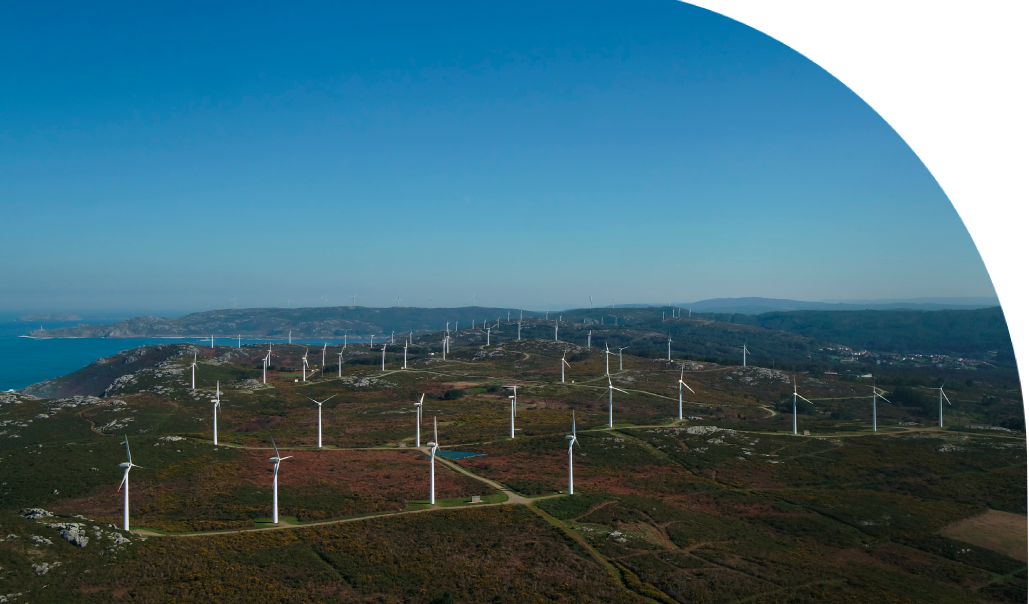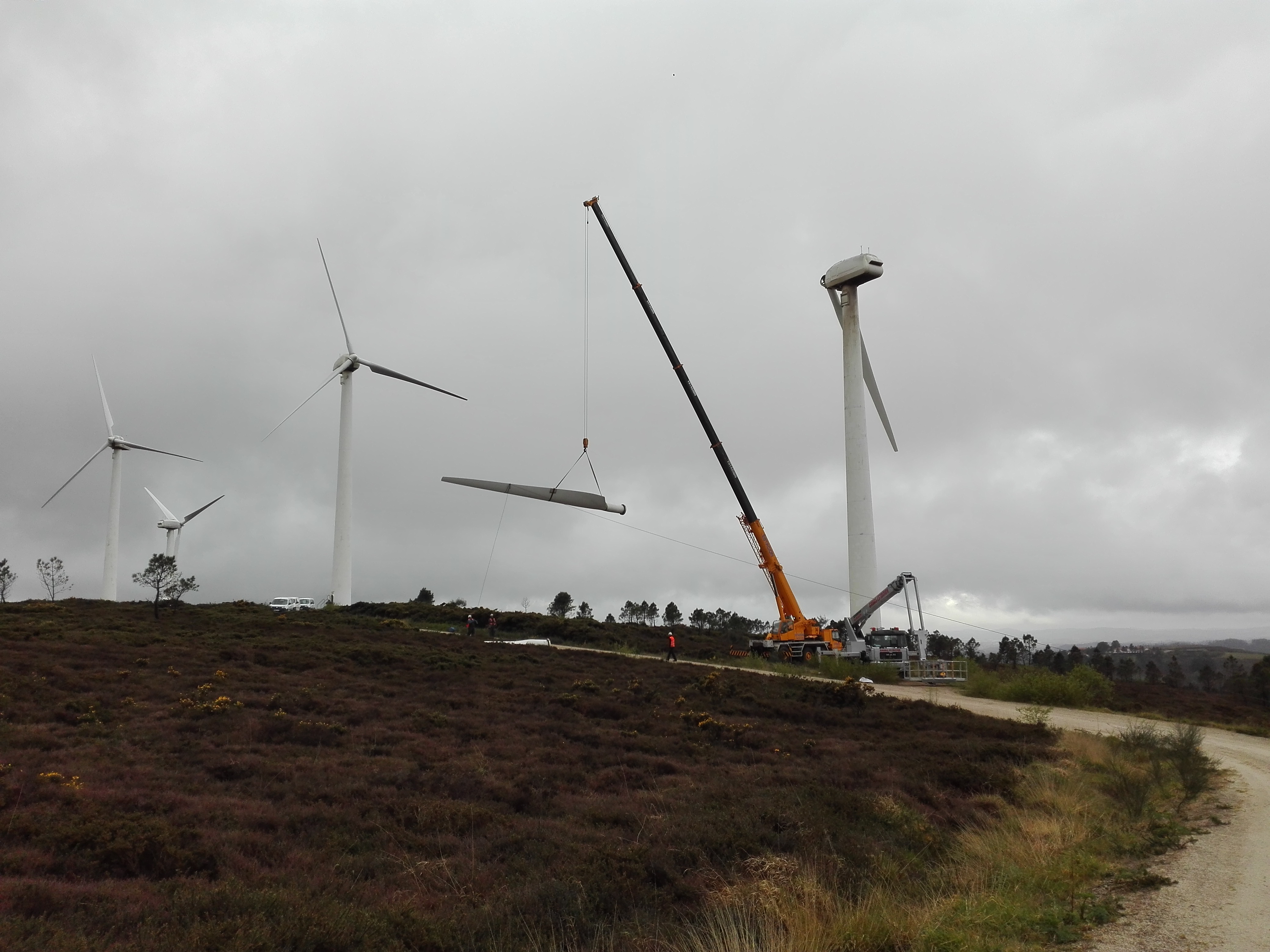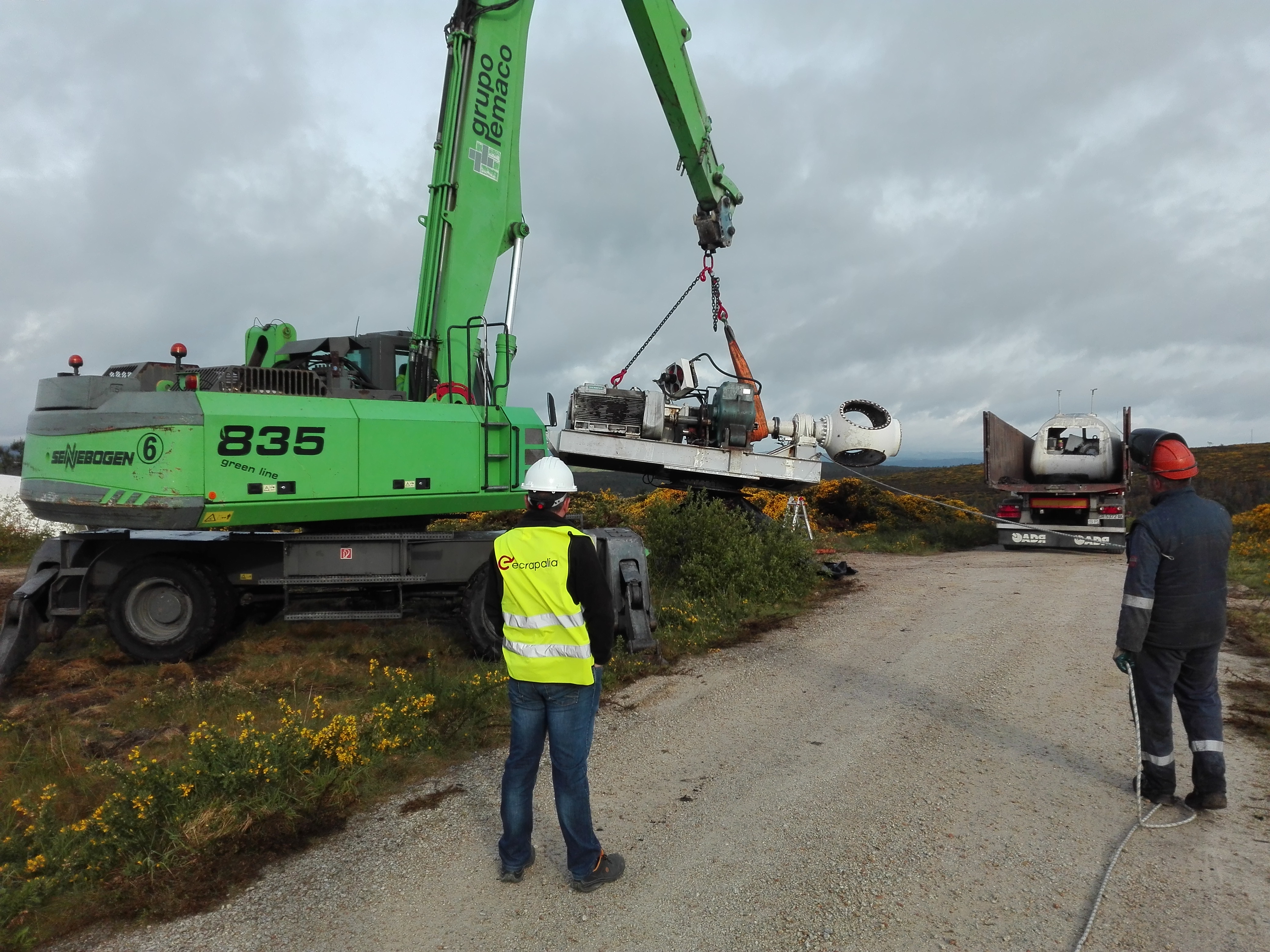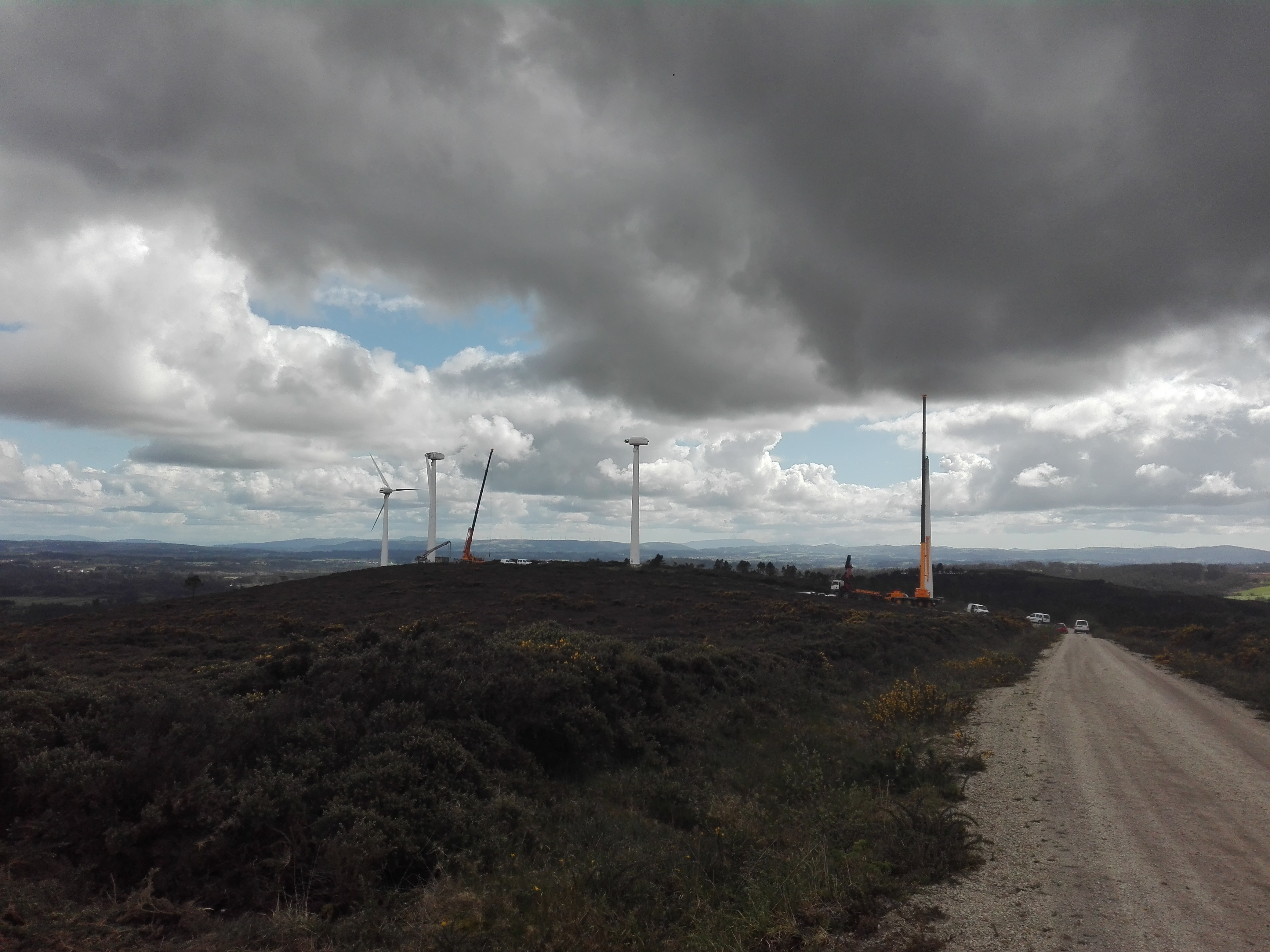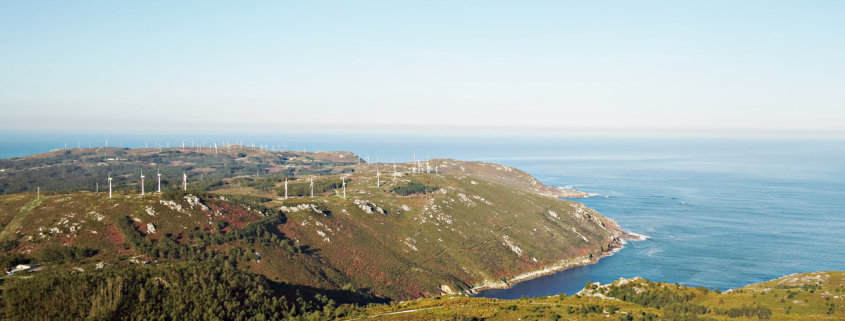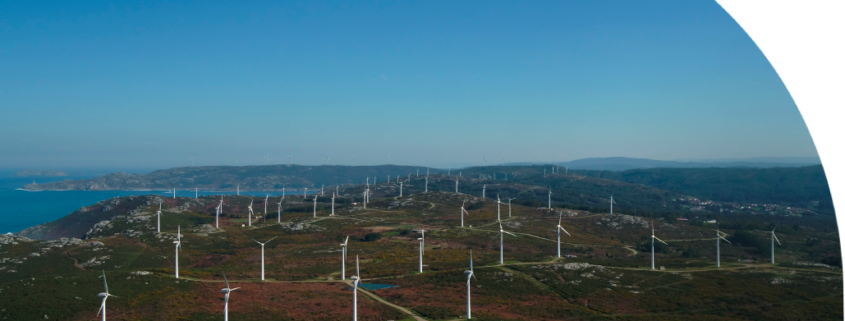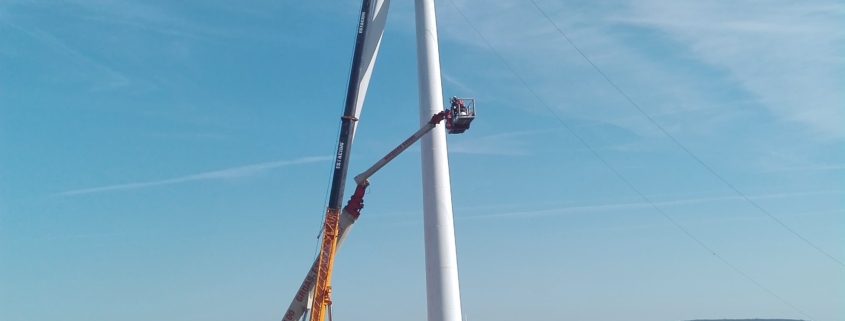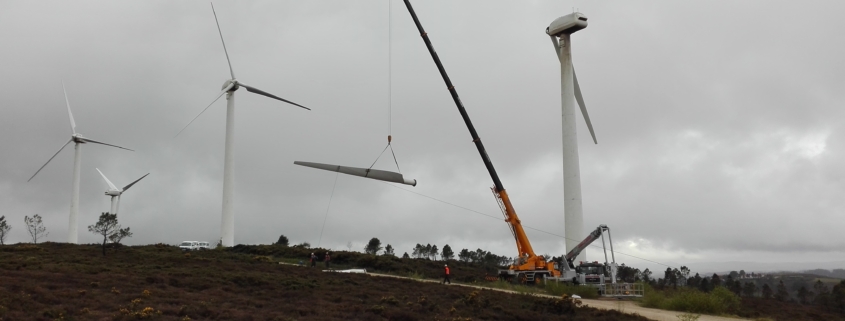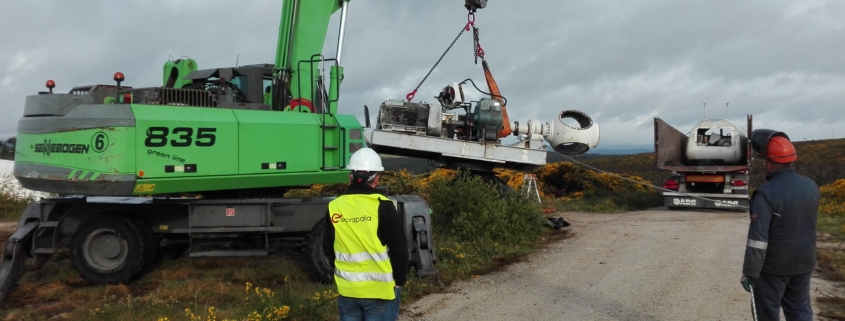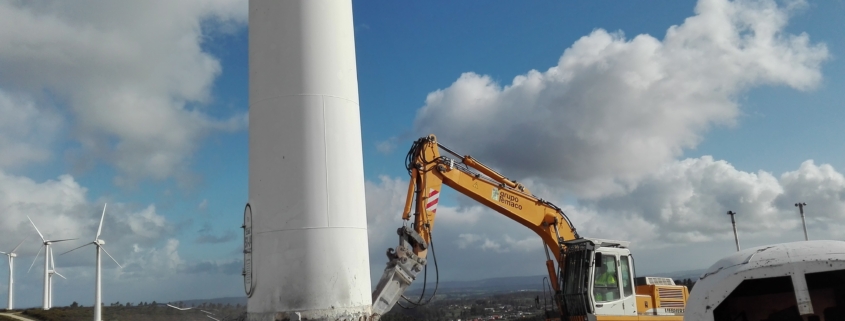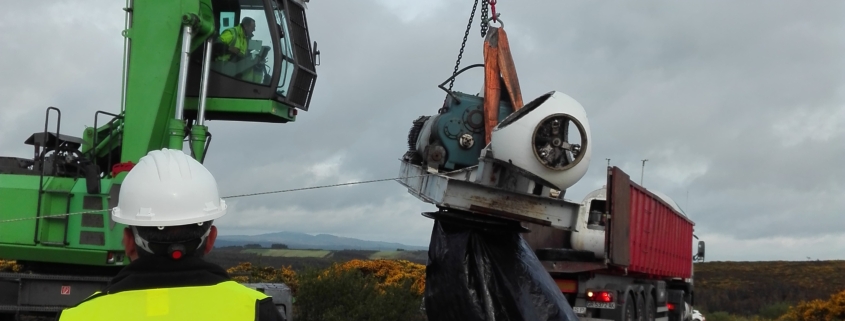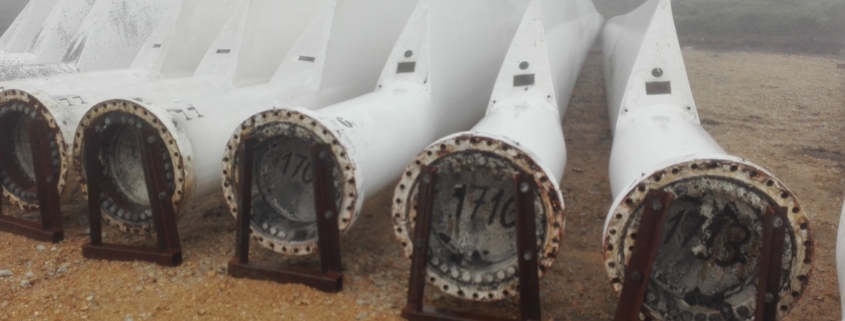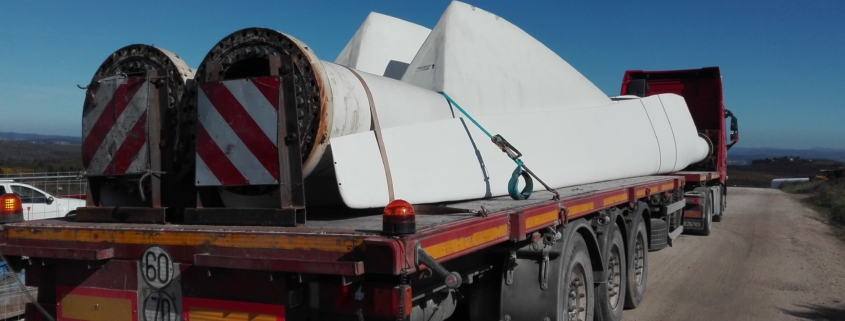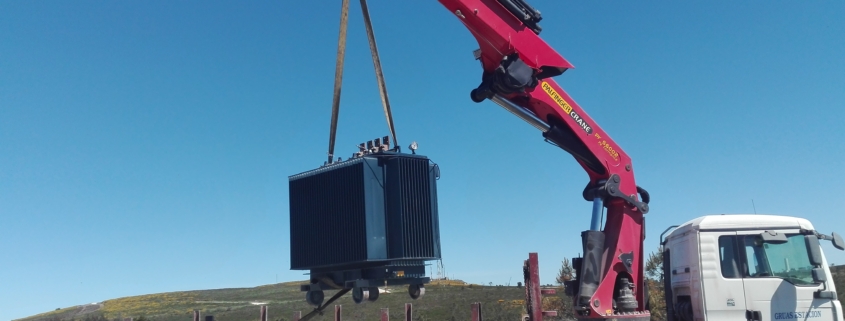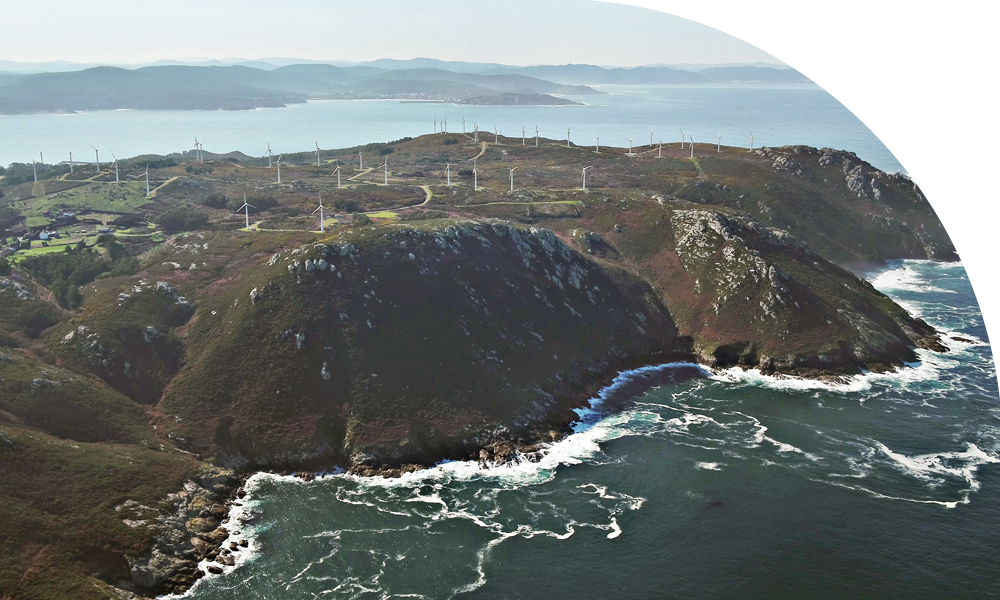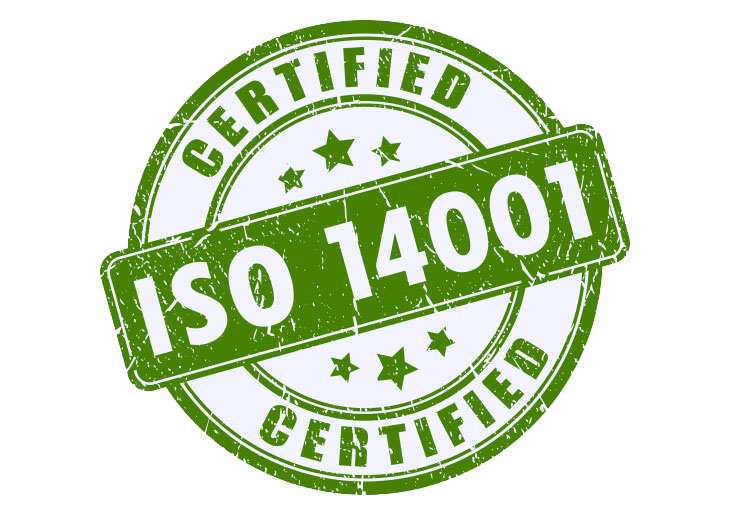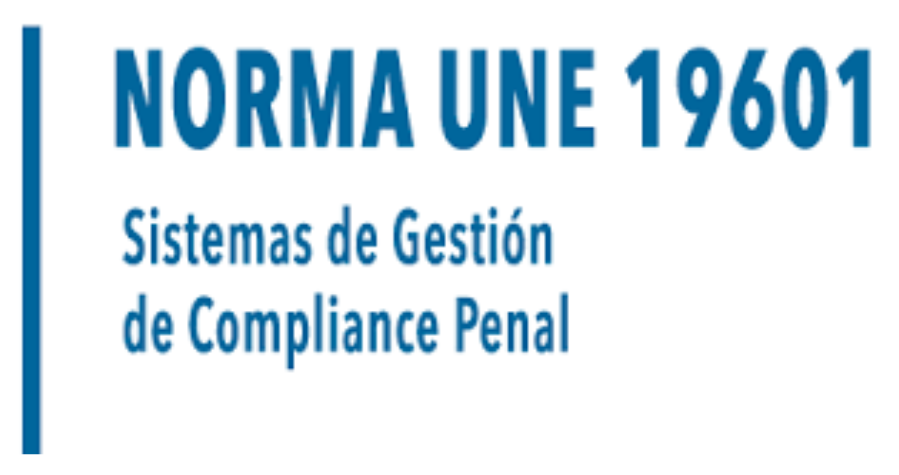REPOWERING: DISMANTLING WIND PARKS IN A CIRCULAR WAY
DISMANTLING // POWER GENERATION AND OIL
Dismantling the wind parks on Zas and Come
The company that owned these two wind parks, located within the municipality of Puenteceso and Zas/Santa Comba (A Coruña) opened a tender for the dismantling of the wind parks after running for more than 20 years. Part of the dismantled elements were supposed to be reused by the developer and the rest of equipment needed to be sold for the same purposes.
A sustainable challenge
Dismantling 5 300 Tns of giants to be reemployed, taking into account that the wind park at Corme is located within a special bird protection area.
A circular solution.
We deployed our Repowering solution, a pioneer process carried out for the first time in Spain for the Malpica wind park. In this solution, the equipment is dismantled to be reused and sold globally as useful material. The aim is to strengthen the three pillars of all our projects: generate environmental returns by preventing waste generation, economic returns from the sale of the equipment and social returns since the equipment was sold to other companies and institutions at a competitive price instead of purchasing brand new equipment.
The process
In the first place, all equipment was documented using pictures and videos, and all technical and maintenance information available was collected. Once the information was gathered, the equipment was auctioned through the website escrapalia.com. Several international ad campaigns were developed in order to gather as many participants as possible in the auction.
At the same time, the wind turbines and transformation centers were dismantled piece by piece in order to be reemployed. All safety regulations were preserved, including those related to the special bird protection area.
The goal was to reemploy as many pieces of equipment as possible, a win-win situation: Waste is decreased and economic returns increase.
Results
75% of saleable assets were delivered to be reemployed, therefore generating 75% less waste.
- 550 tons of iron and steel
- 125 tons of fiberglass
- 21 tons of used mineral oils
- 2 tons of plastic
Economic returns were doubled when compared to classic scrapping processes.
The equipment is already living a second life, with more than 9 different companies or institutions owning them. More than 50% of the equipment was sold to international companies. Several pieces of equipment were sold to three education institutions, both public and private.

 POWER GENERATION PLANT
POWER GENERATION PLANT 
